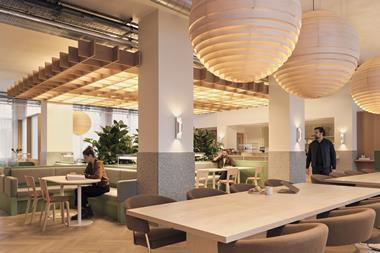As companies reduce office-space requirements to accommodate staff more likely to work from home, tenants are starting to demand spaces that more ably accommodate flexible working and the renewed focus on wellbeing in the workplace.

Within the office market, this has resulted in greater competition between landlords to attract tenants and a heightened need to provide high-quality spaces. It is, therefore, vital to quantify the current and future performance of new and existing offices. One option for measuring this is through post-occupancy evaluation (POE).
POE is a way of gathering feedback, often used on more subjective elements such as thermal comfort. The focus can be on numerous aspects, including technical performance (systems or materials), environmental performance (energy, waste, water use), organisational, social or economic performance.
With a POE, quality design can be justified quantitatively and monetised. Similarly, POEs can measure how the building contributes to productivity through design and environmental conditions.
NABERS UK, a system for rating the energy efficiency of office buildings, places the onus on landlords to reduce energy alongside the industry’s push towards net zero carbon. So, enabling behaviour change among tenants to reduce their environmental impact is of paramount importance. Carrying out a POE can achieve just that, by enhancing awareness of sustainable features and making staff more conscious of existing policies such as recycling and switching devices off when not in use.

It is recommended that a POE be carried out a minimum of one year after occupation, preferably alongside an evaluation pre-occupation and five years post. This will provide qualitative evidence on how the design performed, what was effective and what was not.
This may seem like a long process, but as a landlord, building a portfolio of evaluations allows you to learn lessons and provide an effective narrative to attract and retain tenants.
Curtis Gubb is senior sustainability consultant at Cundall






























No comments yet